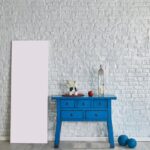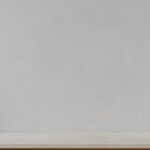What is the width of home decor fabric and why does it matter? When it comes to creating beautiful and functional home decor projects, understanding the width of fabric is essential for achieving the desired results. From curtains and upholstery to throw pillows and table linens, the width of the fabric can significantly impact the overall design and functionality of your home decor creations.
The width of home decor fabric refers to the measurement of the fabric from one selvage edge to the other. This measurement plays a crucial role in determining how much fabric is needed for a project, as well as how the final product will look and function. Whether you are a seasoned DIY decorator or a novice crafter, having a solid understanding of fabric width is essential for successful home decor projects.
In this article, we will explore everything you need to know about home decor fabric width. We will delve into what fabric width means in the context of home decor, discuss common widths available in the market, and examine factors that can affect fabric width.
Additionally, we will provide tips for choosing the right width for your specific project and offer guidance on working with different widths during sewing and construction. By the end of this article, you will have a comprehensive understanding of how fabric width impacts your home decor endeavors and be well-equipped to make informed decisions for your future projects.
Understanding Fabric Width
When it comes to home decor projects, understanding the width of fabric is crucial for achieving the desired outcome. The width of fabric refers to the measurement of how wide a piece of fabric is, and it plays a significant role in determining the amount of material needed for a project, as well as how the finished product will look and function.
In the context of home decor, fabric width differs from other types of fabric due to its specific measurements and how it impacts the design and functionality of items such as curtains, upholstery, and bedding.
Standard Measurements
In the world of home decor fabric, standard measurements typically range from 54 to 60 inches wide. This is larger than typical apparel fabrics, which are usually around 45 inches wide. The wider width of home decor fabric allows for more versatility in projects such as curtain panels or large-scale upholstery pieces. Understanding these standard measurements is essential when planning and purchasing materials for a home decor project.
Difference From Other Types of Fabric
Home decor fabric differs from other types of fabric primarily in its width and intended use. While apparel fabrics are generally narrower and used for clothing or accessories, home decor fabrics are wider and designed for use in decorating homes.
The wider width allows for seamless construction of window treatments, bedding, pillows, and upholstery that would not be possible with narrower fabrics. Additionally, home decor fabrics often have different finishes or backings that make them more suitable for these specific applications compared to other types of fabric.
Having a clear understanding of what fabric width means in the context of home decor is crucial for successful project planning and execution. By knowing the standard measurements, differences from other types of fabric, and how it impacts design and functionality, individuals can make informed decisions when selecting materials for their home decor projects.
Common Fabric Widths
Standard Widths
The most common widths for home decor fabric are typically 54 inches and 60 inches. These standard measurements are widely available and offer a good balance between versatility and value. The 54-inch width is commonly used for drapery, curtains, and upholstery projects, while the 60-inch width is preferred for larger pieces of furniture such as sofas, chairs, and ottomans. Both widths provide ample fabric to work with while minimizing the number of seams in the final product.
Wide Widths
For more expansive home decor projects, wide width fabrics may be preferred. These typically measure at least 108 inches wide, providing a seamless look for larger curtains or bedding items. Wide width fabrics are advantageous in that they reduce the need for joining multiple pieces of fabric together, creating a continuous and unbroken pattern or design. However, they can be more challenging to work with due to their size and weight, requiring careful handling during cutting and sewing.
Narrow Widths
Narrow width fabrics, measuring around 35-45 inches wide, are often utilized for specific home decor applications such as table linens or pillow covers. While these widths may limit the types of projects they can be used for, they are ideal for smaller scale items and can offer cost savings by requiring less yardage than wider options. Additionally, narrow width fabrics can be easier to handle during sewing and require less space for storage when not in use.
Factors Affecting Fabric Width
When it comes to home decor fabric, the width of the material can be influenced by various factors that impact its overall suitability for different projects. Understanding these factors is essential for making informed decisions about which fabric to use for specific home decor endeavors. Here are some important considerations when it comes to the width of home decor fabric:
- Type of Material: Different materials have unique properties that can affect their width. For instance, natural fibers like cotton and linen tend to have a standard width, while synthetic fabrics like polyester may come in a wider range of widths due to the manufacturing process.
- Manufacturing Process: The method used to produce the fabric can also play a role in determining its width. Some fabrics may be woven or knitted to specific dimensions, while others may undergo finishing processes that impact their final width.
- Industry Standards: Certain types of home decor fabric may adhere to industry standards regarding their width, especially if they are intended for specific uses such as upholstery or drapery. It’s essential to be aware of these standards when selecting fabric for particular projects.
Taking into account these factors can help decorators and DIY enthusiasts choose the right fabric based on their project requirements. Whether it’s selecting the appropriate material or understanding how industry standards affect fabric width, being knowledgeable about these factors is crucial for achieving successful and visually appealing home decor results.
Choosing the Right Width for Your Project
When selecting the appropriate fabric width for a home decor project, it is essential to consider several factors to ensure a successful outcome. One of the primary considerations is the type of project you are undertaking. For instance, curtains and draperies will typically require wider fabric widths to achieve proper fullness and coverage. On the other hand, smaller items like throw pillows or table runners may not necessitate as wide a fabric.
Another important factor to take into account is the style or design aesthetic you want to achieve with your home decor project. For example, if you are aiming for a more tailored and structured look, opt for wider fabrics that can hold their shape when draped or gathered. Conversely, if you prefer a softer and more flowing appearance, narrower fabrics may be more suitable for your needs.
It is also crucial to visualize how different fabric widths will look within the specific space where they will be utilized in your home decor project. Using visual references such as mock-ups or samples can greatly aid in making an informed decision about which fabric width will best complement the overall design of the space.
By considering these tips and taking into account these various aspects, you can confidently select the most appropriate fabric width for your home decor project.
| Project Type | Recommended Fabric Width |
|---|---|
| Curtains/Draperies | 54 inches – 110 inches |
| Throw Pillows/Table Runners | 45 inches – 60 inches |
Understanding Yardage and Width
When working on home decor projects, it is crucial to understand the width of the fabric and how it will impact the overall design and functionality of the project. The width of home decor fabric refers to the measurement of the fabric from one selvage edge to the other. This measurement is essential in determining how much fabric will be needed for a particular project and how the final product will look once completed.
To calculate the amount of fabric needed based on the width and length of the fabric, it is important to keep in mind that standard fabric widths for home decor projects typically range from 54 to 60 inches. Understanding how to calculate yardage based on these measurements is essential for any successful home decor project.
Here’s a step-by-step guide to calculating yardage based on fabric width:
- Measure the width and length of your project in inches.
- Divide the total width needed by the actual width of the fabric. For example, if your project requires 90 inches in width and you are using a 60-inch wide fabric, you will need 1.5 widths or “cuts” of fabric.
- Round up to ensure you have enough fabric for your project, considering pattern repeat and seam allowances.
By following this guide, you can ensure that you purchase and use just the right amount of fabric for your specific home decor project, preventing waste and saving money in the process.
Sewing and Working With Different Widths
Sewing and working with different fabric widths is an important aspect of home decor projects. When it comes to sewing, the fabric width can significantly impact the overall outcome of your project. The width of the fabric will determine how you lay out your pattern pieces, where you place your seams, and how much fabric you need for the project.
One important consideration when working with different fabric widths is pattern placement. If you are working with a narrow fabric width, you may need to be strategic about where you place your pattern pieces on the fabric to ensure that you have enough material for the entire project. Additionally, if your fabric has a specific directional print or pattern, you’ll need to take this into account when laying out your pieces.
Managing seams is another crucial factor when sewing with different fabric widths. Depending on the width of the fabric, you may need to adjust the location of seams in order to achieve a professional-looking finish. For example, wider fabric widths may allow for larger panel sizes and fewer seams, while narrower widths may require more seams and careful attention to matching patterns and prints.
When it comes to home decor projects, understanding how to sew and work with different fabric widths is essential for achieving professional results. Whether you are making curtains, upholstery, or other decorative elements for your home, taking into account the width of the fabric will help ensure that your finished product looks polished and well-crafted.
| Aspect | Consideration |
|---|---|
| Pattern Placement | Strategic layout for narrow fabrics |
| Seam Management | Adjusting seam locations based on width |
| Professional Results |
Conclusion
In conclusion, the width of home decor fabric is a crucial factor that greatly impacts the overall design and functionality of any home decor project. Understanding fabric width is essential for choosing the right material for specific projects and ensuring that the end result meets both aesthetic and practical requirements. Whether it’s curtains, upholstery, or bedding, the width of the fabric plays a significant role in determining the overall look and performance of the finished product.
As discussed in this article, there are common fabric widths used in home decor projects, each with its own set of pros and cons. It’s important to consider factors such as material type, manufacturing process, and industry standards when selecting the appropriate fabric width. Additionally, understanding yardage and width is crucial for calculating the amount of fabric needed for a project and avoiding wastage or shortages.
Ultimately, when working with different fabric widths, proper sewing techniques and pattern placement are important for achieving professional results. Seam management and careful consideration of how different widths will affect the final look of a project are also critical.
In summary, being mindful of fabric width will undoubtedly lead to more successful home decor creations that meet both aesthetic expectations and functional needs. By considering all these factors when choosing fabric for future projects, home decorators can ensure that their designs are not only visually stunning but also built to last.
Frequently Asked Questions
How Wide Is Home Decor Fabric?
Home decor fabric can vary in width, but it typically comes in widths ranging from 54 inches to 60 inches. This wider width is often preferred for home decor projects as it allows for covering larger areas such as windows, bedding, or upholstery.
What Is the Standard Width of Fabric?
The standard width of fabric is usually around 45 inches to 60 inches. This standard measurement applies to a wide range of fabrics including cotton, linen, and polyester. However, some fabrics like home decor or furnishing fabric can have wider widths to accommodate specific project needs.
How Wide Is Furnishing Fabric?
Furnishing fabric typically comes in wider widths compared to standard fabric, with most options available in widths ranging from 54 inches to 60 inches. This wider width is suitable for furnishing projects such as curtains, upholstery, and decorative pillows where more fabric coverage is needed.

I’m thrilled to be your companion on this exciting journey through the world of home decor and design. With a passion for turning houses into homes and a keen eye for the finer details, I’m here to help you transform your living spaces into beautiful, functional, and meaningful havens.





